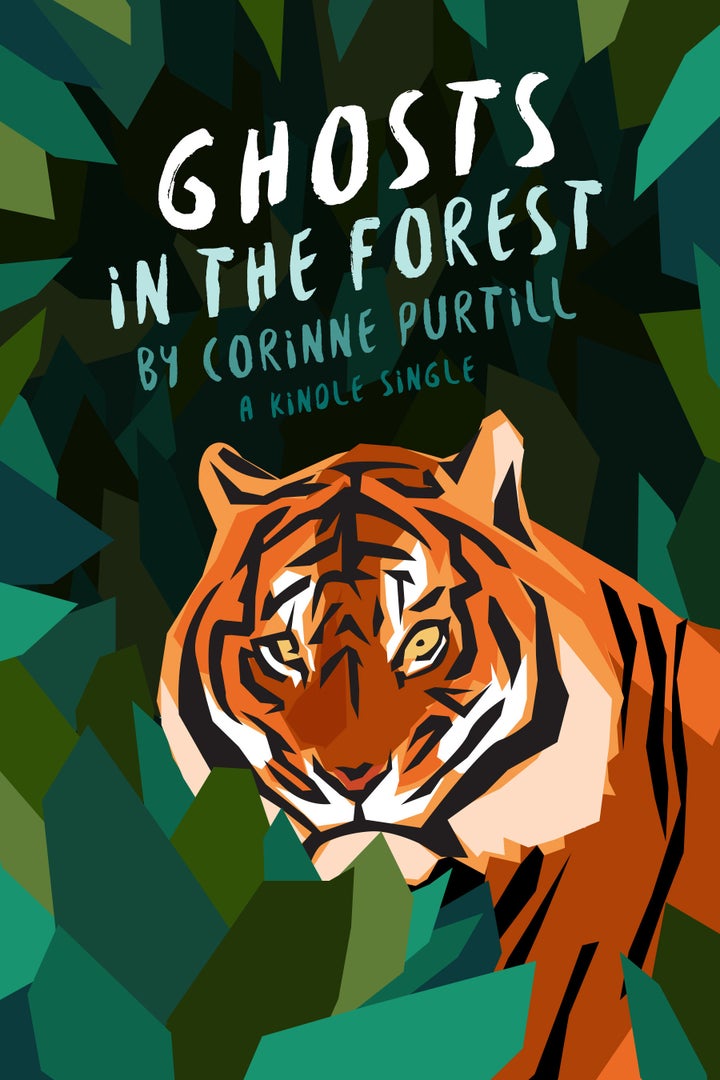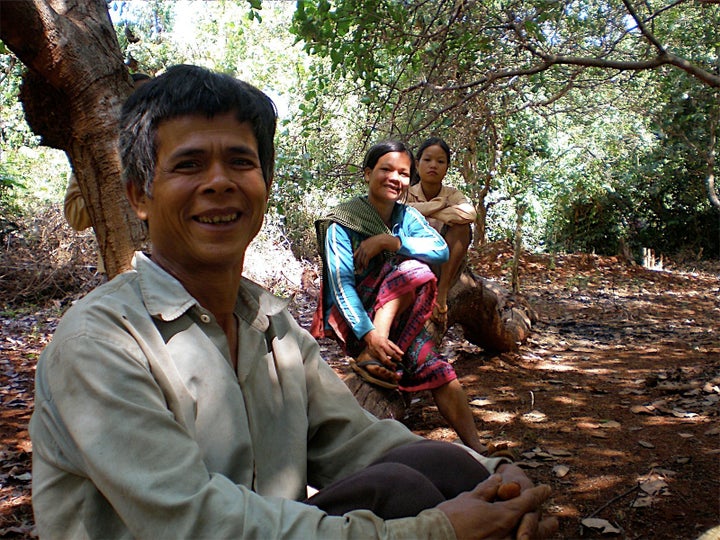
In 2004, 34 men, women and children stepped out of a forest in southern Laos. They had never seen cars, telephones or television, and believed that they were refugees from a war engulfing their native Cambodia. They did not know that the war they were fleeing had in fact ended -- a full 25 years earlier. Journalist Corinne Purtill traveled to Cambodia to learn the truth about their time on the run. Their story, told for the first time now in the book Ghosts in the Forest, is a haunting tale of isolation, loyalty, murder and the appalling choices the quest for survival forces people to make.
It was December 2004. Ly Kamoun -- Moun for short, pronounced a hard, fast moon -- was about 40 years old. He wore a once-white T-shirt stained auburn with dust and sat with his forearms resting stiffly on his thighs, as though he were still conscious of the shirt’s fabric against his skin. Between the first and second fingers of his left hand he held a stubby, hand-rolled cigar wrapped in a banana leaf. His dark brown eyes scanned his audience carefully, warily. Our eyes met and I smiled reflexively. He stared back, his expression unchanged in the manner of a pragmatic man who conserved his energies for when there was something to smile about.
My translator handed him a cell phone and asked if he knew what it was. Moun held up the phone, turning it carefully to examine the blue casing. He scrutinized the worn buttons, the anemic glow of its pale green screen, the unfamiliar script: N-O-K-I-A. Then he handed it back with a disinterested shrug. “Ot tay,” he said in Khmer, Cambodia’s national language. Nope.
Moun had spent more than half his life in the forest as a prisoner, soldier or fugitive. In 1979, when he was about 15, he was kidnapped by the Khmer Rouge during the Maoist guerrillas’ campaign to unmake Cambodia. When troops from neighboring Vietnam invaded the country, the Khmer Rouge made him a soldier. For the ten years he lived in their army, he was told that any Vietnamese soldier given the chance would kill him, eat his liver and slaughter his children. Then he and his family and friends defected. They ran away into the woods, making themselves marked men for their former army, too.
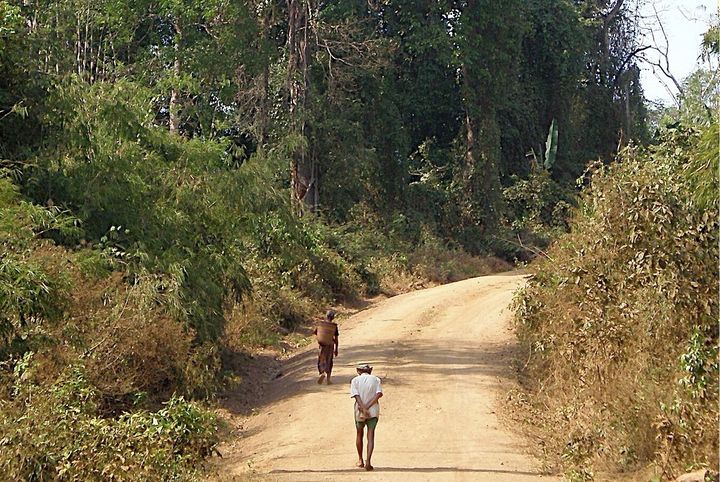
They lived in the forest for fifteen years, apparently detected or molested by no one, living off critters hunted with homemade traps and deteriorating army-issued weapons and crops they grew themselves. They built huts from bamboo. They made clothing from tree bark. They understood the natural world’s power and limitations, and how utterly dependent they were upon each other.
In November 2004, they emerged from the trees and presented themselves to a tiny village in southern Laos as refugees from a war that no longer existed. Calls were made. Cambodian authorities picked them up and took them back to the villages in Ratanakiri province they had fled decades before. They moved back in with family members -- in one man’s case, just across a red dirt path from the wooden house in which he was born. Moun and his family fled into the forest at a time when hungry people could be killed for eating food they weren’t expressly permitted to eat, or for intervening when soldiers beat their children, or for refusing to marry the strangers the army chose as their spouses. Regardless of what they had been told by well-meaning people since returning to Cambodia, it was clear that they weren’t quite sure what side of history they’d ended up on.
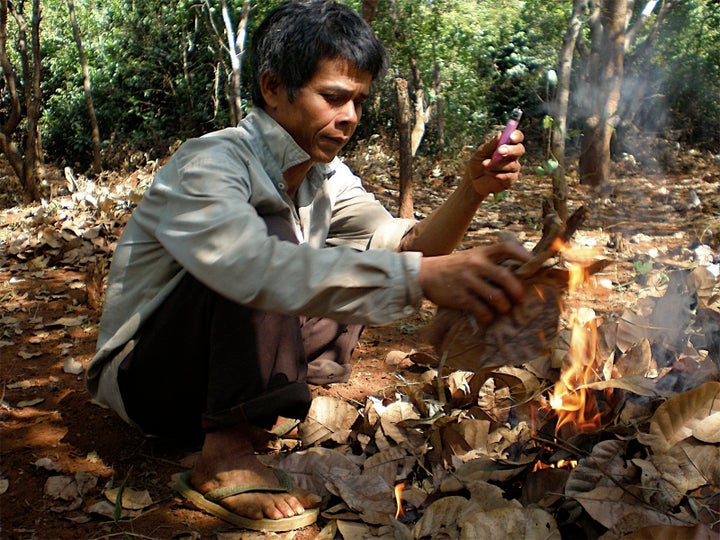
Years would pass before Moun admitted that 40 was an age he made up to end to my queries about his number of years on the planet, which struck him as irrelevant as the number of hairs on his head. He did not know, or care to know, the year of his birth. He was born of a people with no written language. No calendars or records marked the event of his arrival. As I would learn while trying to piece together the story of his life, Moun did not come from a storytelling culture. Questions about his life’s chronology, and especially his feelings about those events, would be for him a constant source of bemusement, bewilderment and frustration.
That did not deter the reporters gathered at Moun’s village that day, an international group that included my colleague Phann Ana, a reporter from the Cambodia Daily newspaper, and myself, a 24-year-old American journalist nearing the end of a yearlong stint at the country’s English-language paper.
We were there to turn the people shifting uncomfortably before us in cheap new clothing into stories. It almost didn’t matter what they said. They were already archetypes, joining the isolated Amazon tribes and forgotten Japanese World War II soldiers in the canon of people who had managed, however briefly, to unhitch themselves from the world.
Two men squatted in the dirt to show me how they had built fire in the forest, placing wood shavings between two pieces of bamboo and rubbing them vigorously against a third stick until the chips inside glowed an angry red. With blunt matter-of-factness they described their diet of wild chicken, mice, monkeys and the occasional tiger. They had no salt, they were quick to point out. This particular deprivation really seemed to smart.
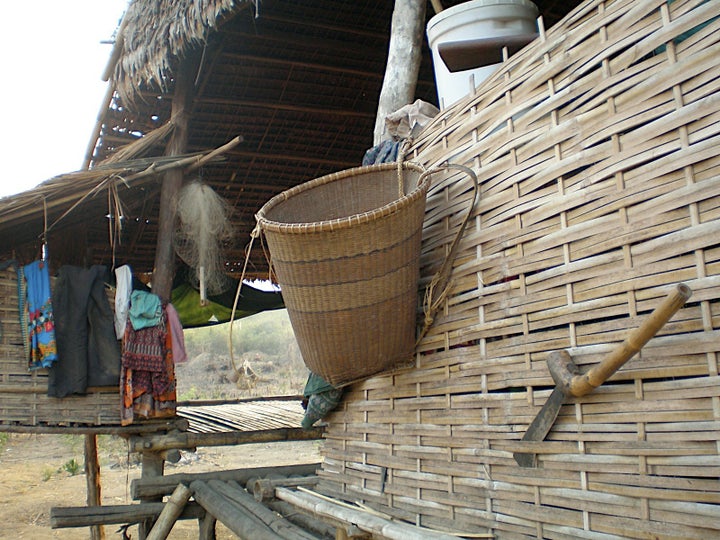
Before these last few weeks they had never seen a telephone, a television or a car. They insisted -- and we believed them -- that it had been a full fifteen years since they had last encountered another person, that they kept completely to themselves that entire time, an isolated, self-sufficient society cut off from time and history.
“I was never happy in the forest. I wanted to see my family, my friends, my birthplace,” Moun told me. “It’s very different from before. Really, far different. People can freely exchange goods... they can buy and sell. It’s amazing. I enjoy it like them, too. Nobody disturbs anyone.”
Moun spoke briefly of a comrade of theirs, an older man who died four or five years earlier. Natural causes, Moun said. They buried his body without ceremony.
“Did anyone else die?” I asked.
“No,” he said without hesitation.
“Did you meet anyone else in the forest?”
“No,” he repeated.
Many times since, I have thought about that first meeting and wondered what it would be like to revisit that day, knowing what I later learned. Maybe I would have read unfairly into Moun’s mannerisms, judging his posture as too taut, his responses too quick. Perhaps I would have felt compassion for a person who had been tested in a way few humans would wish to be. I might have looked at him differently, had I known from the beginning that the story of this gentle, soft-spoken man included starvation, violence and murder. But to understand that, one would have to look far beyond the trailing smoke of a leaf-wrapped cigar.
Ghosts in the Forest is available now as a Kindle Single. Corinne Purtill is a journalist; you can follow her on Twitter at @corinnepurtill.
